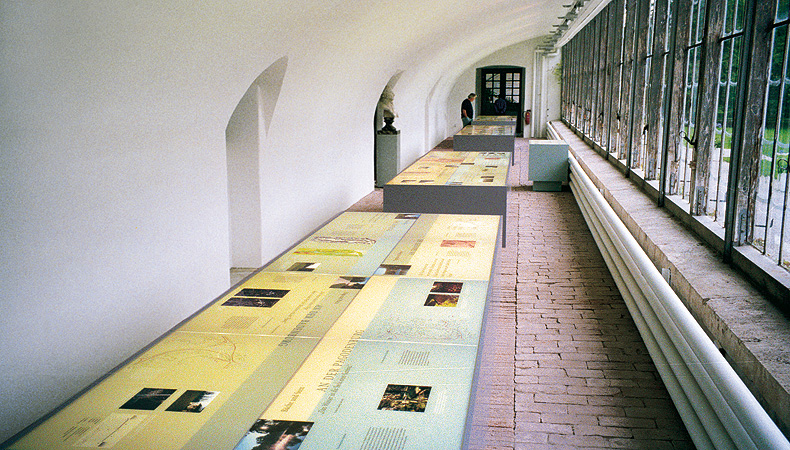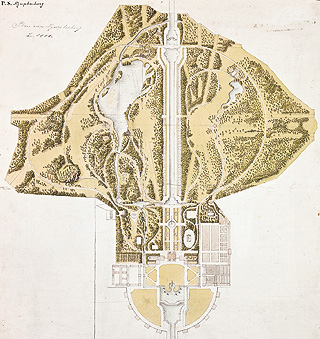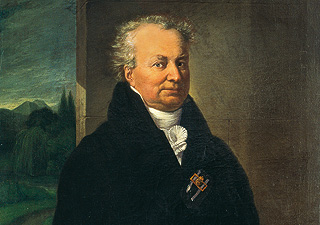Main information:
Nymphenburg Park
Friedrich Ludwig von Sckell and Nymphenburg.
The history, design and maintenance of the palace park
Permanent exhibition in the Geranium House (Opening hours)

The exhibition in the historic Geranium House – built by von Sckell himself in 1816 as a glasshouse for growing foreign ornamental plants – explains why, for example,
-
irregularly shaped borders of woodland are necessary to preserve this international masterpiece of garden design,
-
vistas between areas of trees and shrubs must be kept open,
-
the areas where the ground has been artificially shaped must not become overgrown with trees and shrubs,
-
valuable old trees such as oaks and linden trees must not be crowded out by maple and ash trees and
-
healthy trees are thus also removed every year.

Plan for restructuring Nymphenburg
as a
landscape park, F. L. von Sckell,
1801/04
Photo: Bayerische Schlösserverwaltung
It describes von Sckell’s concept for the park, and in the process explains the basic principles of park maintenance as it is still practised today.
Between 1804 and 1823, by order of King Max I Joseph, von Sckell transformed the existing formal baroque gardens of Nymphenburg Palace into a landscape garden, but left the sections along the central axis as they were.
The regular, geometrical axis and avenue systems with canals and pools, hedge gardens etc. were replaced with naturally shaped design elements, large meadows with various contours and hills, lakes, ponds and streams with naturally formed banks and islands, and winding paths. All the trees and shrubs were planted individually or in groups, groves or woodland areas with irregularly shaped clearings.
In this way von Sckell created scenes of great variety such as the Blutenburg vista and the Löwental (lion valley). The historically important Nymphenburg Palace Park is under protection as a place of historic interest and as a landscape.

Friedrich Ludwig von Sckell,
Clemens von Zimmermann, c. 1810
© Münchner Stadtmuseum
Friedrich Ludwig von Sckell, who was born in Weilburg an der Lahn in Hessen in 1750, was the most outstanding garden designer of his time. He died in 1823 in Munich. It was largely due to von Sckell that the English-style landscape garden, which had established itself on the European continent in the mid-18th century, also became popular in southern Germany.
With the English Garden and the Nymphenburg Palace Park, he left Munich and its citizens two outstanding, world-famous masterpieces of garden design. Both parks are the responsibility of the Bavarian state.
The Bavarian Administration of Palaces, Gardens and Lakes maintains and restores this legacy on the basis of the Bavarian Monuments Protection Act.

Facebook Instagram YouTube